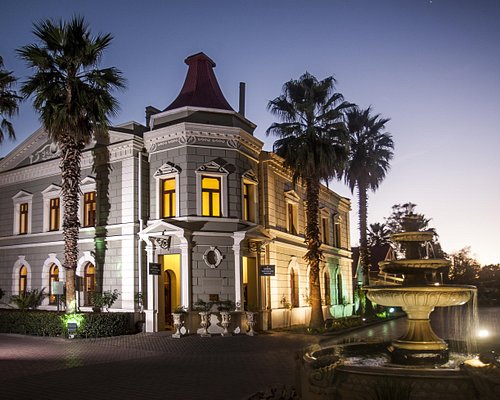See This Report on Johannesburg North Attractions
See This Report on Johannesburg North Attractions
Blog Article
The Definitive Guide to Johannesburg North Attractions
Table of ContentsHow Johannesburg North Attractions can Save You Time, Stress, and Money.The Johannesburg North Attractions DiariesA Biased View of Johannesburg North AttractionsThe Of Johannesburg North AttractionsThe Main Principles Of Johannesburg North Attractions Johannesburg North Attractions Things To Know Before You BuyThe Ultimate Guide To Johannesburg North Attractions
You ought to maintain safety in mind and tourists need to remain sharp at all times when in strange environments. Talk to the residents when you remain in community to learn about the area you are remaining in. Johannesburg North attractions. When on the road (this doesn't apply to mall and various other safe environments) ideal basic advice is to try your best to resemble a regional and to avoid showing any kind of form of riches
Excitement About Johannesburg North Attractions
Professor Revil Mason O. J. (Thomson, 1946) checked out the Witwatersrand's pre-colonial background. His archaeological job took off the 'em pty land' misconception, according to which the region was empty of human habitation before the arrival of European inhabitants. In his magazines Prehistory of the Transvaal: A Document of Human Activity (1962) and Beginnings of Black Individuals of Johannesburg and the Southern Western Central Transvaal Advertisement 3501880 (1986 ), Professor Mason showed the extent of social and financial growth in the location before Europeans set foot right here.

The 25-Second Trick For Johannesburg North Attractions
In 1878, David Wardrop discovered gold in quartz blood vessels at Zwartkop, north of Krugersdorp. In 1881, Stephanus Minnaar came throughout gold on the farm Kromdraai, near the Cradle of Humankind.
In March 1886, a protrusion (soon to be called the Main Reef) was discovered, quite luckily, on Gerhardus Oosthuizen's farm Langlaagte. Some claim that the Lancastrian coal miner George Pedestrian found this coral reef. An additional travelling English miner, George Harrison (that had formerly operated in Australian mines) obtained a prospecting licence in regard of Langlaagte in May 1886.
He chose to carry on in a quest for greener pastures, and disposed of his Langlaagte claim for the baronial sum of 10. Alas: below lay the richest goldfield ever before located. The discovery of this abundant auriferous coral reef provoked a gold rush that signified completion of bucolic tranquillity in the southern Transvaal.
It would certainly, within six years, become the largest community in southern Africa. Within a years, it would certainly make the Z. A. R. till then an anarchical and insolvent little state the wealthiest country in Africa. By the turn of the century, the Z. A. R. was to exceed Russia, Australia and the USA of America to become the globe's leading gold producer, producing even more than a quarter of the world's gold.
The Only Guide for Johannesburg North Attractions
It was called Ferreira's Camp, named after Colonel Ignatius Ferreira. He was a Boer adventurer upon whom the Clicking Here British authorities had bestowed the standing of Friend of the Many Identified Order of St Michael and St George (qualifying him to the post-nominal letters C. M. G.) in gratefulness for his function in the battle that had actually deposed the Pedi king Sekhukhune in 1879.
Quickly the camp was including camping tents and wagons as novices showed up daily from much and wide. By September 1886, some 400 people resided in Ferreira's Camp, which soon boasted upraised iron and lumber buildings. Two various other camps were established: Meyer's Camp on the farm Doornfontein, and Paarl Camp. The latter was nicknamed Afrikander Camp; lots of people from the Cape Swarm resolved there.

The 9-Second Trick For Johannesburg North Attractions
This name obtained currency by word of mouth, such that the State Secretary verified the name to the Mining Commissioner on 9 October 1886. Stands in the town were auctioned on 8 December 1886. While some stands were cost 10, others were torn down for as low as sixpence.
2 years later on, these erven were to change hands for as high as 750 each. The tented camps dwindled as a dorp of corrugated iron buildings developed and expanded north of the mines situated along the Main Coral Reef Road. Locations such as Jeppe's Town (where working-class immigrants erected their houses) and Doornfontein (where the affluent new 'Randlords' started to construct their extravagant houses) were quickly included in the ever-expanding map of the town.
Fascination About Johannesburg North Attractions
Apart from the road names, there were no indicators of Johannesburg being located in a Dutch-speaking nation. Numerous years later on, C. W. Kearns O. J. (one of the initial boys enlisted at St John's College in 1898) would remember: 'A weird reality concerning Johannesburg was that, although it was in the [Boer Republic], nearly every person talked English and even the Federal government slaves dealt with one in English, unless they were initial attended to in the Taal (or Low Dutch)'.
Because of this, Britain had a passion in making certain optimum conditions for gold production on the Witwatersrand, which the gold was exported to London instead than Berlin an essential provided even more clamant by the Z. A. R - Johannesburg North attractions.'s increasing toenadering with Germany. Mine owners were on a clash with Head of state Kruger, whose plan of monopolistic concessions (often approved to his cronies) protected against mining business from obtaining supplies of products (especially dynamite) and work on their very own, less expensive terms
Some Known Incorrect Statements About Johannesburg North Attractions
In 1890, the Volksraad had limited the franchise to white guys that had actually lived in the Z. A. R. for fourteen years or longer, thus invalidating the majority of the immigrants (that happened to be the significant factors to the fiscus). Frustration for the vote was a simple pretext for promoting a different agenda; a lot of uitlanders regarded themselves as short-lived visitors and had no intention of staying in the Z.
Report this page